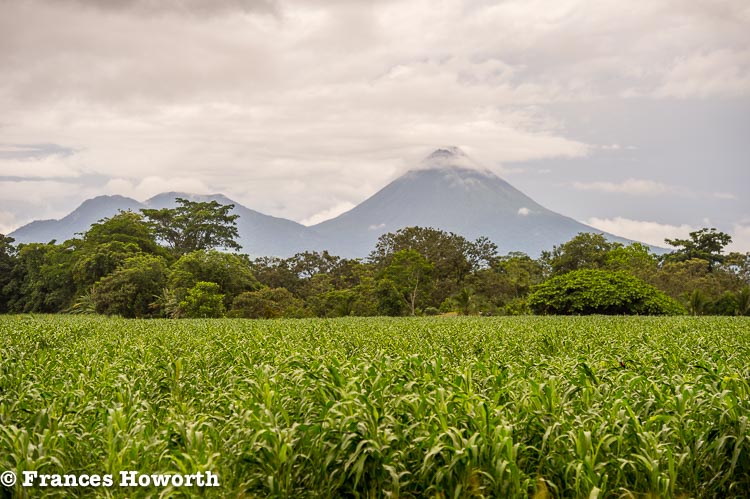 As one of the country’s most scenic and easily accessible areas, the Arenal Volcano is an unavoidable presence while traveling within this part of the country. It is tall and imposing and has a reputation that precedes itself. Arenal’s perfectly symmetrical shape makes it a sightseer’s dream, while its abundance of well signed trails makes it a great place to go hiking.
As one of the country’s most scenic and easily accessible areas, the Arenal Volcano is an unavoidable presence while traveling within this part of the country. It is tall and imposing and has a reputation that precedes itself. Arenal’s perfectly symmetrical shape makes it a sightseer’s dream, while its abundance of well signed trails makes it a great place to go hiking.
At 1,657 metres above sea level it looms large and ominous over the pastured green hillsides that surround its base. Although currently in a resting phase, Arenal remained the country’s most active volcano for the past 43 years. Its storied history is charged with eruptions – both major and minor – that have intimately affected the region and the people who live here.
Until 2010, it was Costa Rica’s most active volcano. Much to the enjoyment of its visitors, Arenal spewed enormous amounts of lava, gas and ash on a regular basis. That eruptive cycle – which began with the infamous eruption of 1968 – ended recently.
1968 saw the largest recorded eruption in Arenal’s history. After nearly 400 years of inactivity, the Arenal Volcano burst open and buried over 5 mi² (15 km²) in rocks, lava and ash.
The eruptions killed 87 people and buried the 3 small villages. At the height of its ferocious activity, the volcano flung giant rocks – some weighing several tons – more than a kilometre away at a rate of 600 metres per second. These explosions created three new active craters.
In October 2010, Arenal entered into an indeterminate resting phase. For the time being, visitors will be unable to watch the much-loved explosions, although that could change within a matter of months or years. Travelers to Arenal will still enjoy its bountiful sights, sounds and activities— there are mountains to be hiked, lakes to be fished and rivers to be floated.
Lake Arenal sits at the base of the Volcano and is the country’s largest landlocked body of water, with a surface that covers nearly 33 square miles and a depth that reaches some 60 metres.
It was enlarged to three times its original size with the construction of a hydroelectric dam in 1979 a project that now produces nearly 12% of the country’s electric energy.
The towns of Arenal and Tondadora, which were originally sited on the spot where the lake now rests, were relocated to the northeastern side of the lake and the new town was called Nuevo Arenal.
The area surrounding the lake is as inspiring as the water itself – hills of pastured and forested land roll into the distance, while the summit of the volcano dominates the horizon from the first moment you see it on the Journey to Arenal from Tilaran
